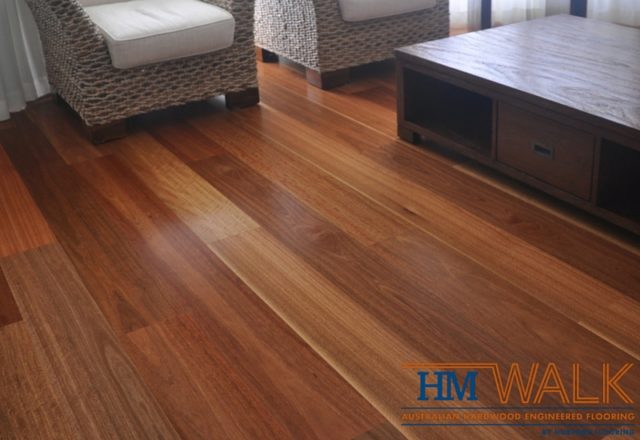If you have your heart set on wood flooring in your project, it is important to consider all options. Basically it boils down to a choice between solid timber flooring or an engineered wood alternative.
Solid timber or wood flooring is, as the name implies, a piece of wood that has been machined into a floor panel from a single log. Most people are familiar with this flooring type as it is commonly found in older homes like Queenslanders. Many homes have hardwood timber floors hiding underneath carpet, which can be sanded and polished to give them a new lease on life. Timber flooring is regarded fondly by most people for the warmth it injects into living spaces. If you don’t have the benefit of existing solid timber floors to rejuvenate, then there is a decision to to make about what floors to install.
It is important to note engineered wood flooring is made from real timber that has been through a manufacturing process. The top surface is a veneer, either natural or engineered timber, which is bonded to layers of plywood. A natural veneer is a very thin slice of real timber, whereas engineered veneer is strands of timber mixed with adhesives to create a composite (we explain what engineered veneer in this blog). Plywood, which forms the base of the floor panel, is also timber. Thin layers of real wood are bonded together with a strong adhesive to make plywood (more detail in this blog). The bottom line is that engineered wood flooring is basically a strong marriage of wood composites. It is a good alternative to solid wood flooring and has a range of advantages to offer.
If you’re on the fence about what option is best for you, consider where you are installing the floors and the conditions they will be subjected to. Solid wood floors can be sanded, so you can get out deep scratches and restore the flooring to its former glory. You can also apply stains and varnishes to alter their appearance. Whether you are able to sand engineered wood flooring entirely depends on the thickness of veneer that has been used. Typically you can’t refinish anything with a surface veneer less than 2mm thick. While this fact, generally encourages people to opt for solid timber, the hardeners and lacquers used on well-made, modern engineered floors should protect their beautiful appearance for many years.
If moisture is a potential issue, than engineered wood is the best choice due to its superior moisture resistance. Engineered wood flooring is also the better alternative for laying over the top of hard surfaces like concrete and tiles. This floating installation means planks are fast to lay and also easy to replace if required. Engineered wood flooring is also available in different depths, which can help you avoid awkward transitions from tiled areas to the spaces you wish to have wood flooring. Removing the need for transition strips delivers a much better aesthetic outcome as well. Another advantage of engineered wood floors is their dimensional stability thanks to their plywood base. They hold their shape better than solid timber floor panels, which means less chance of gaps or warping.
In terms of aesthetics, similar looks can be achieved with either choice. The preferred appearance of timber flooring is for the floors to show a range of colours, grains, and natural features such as figure, sapwood or gum in a particular species. Interestingly, this varies for timber used as wall and ceiling linings where the preference is generally for high levels of consistency.
Another consideration is the variety engineered flooring offers in terms of the width and length of floor panels. Solid timber flooring is generally installed as mixture of long and short planks to help improve its stability, resist moisture, cope with temperature fluctuations and spills.
Finally, another major consideration is cost. Generally engineered wood flooring is cheaper than solid timber and could last up to 100 years. This can be attributed to fact that just one cubic metre of timber can produce 1,000 square metres of veneer. It is important to be aware that all the advantages an engineered wood flooring will be lost if the quality is poor. As with anything, quality over quantity is a good rule of thumb when you consider engineered wood flooring.
If you’re seeking the warmth of timber, you can’t really go wrong with either solid timber or engineered wood flooring. They both are made from timber, so it really comes down to the base panel and its suitability for your project. Don’t be afraid to seek advice on your specific project needs from suppliers so you can weigh up what is best in terms of floor performance and budget.
Matilda Veneer supplies Sliced Veneer to Hurford Flooring, creators of HM Walk engineered flooring.
Find out more here.
(Image courtesy of Hurford Flooring)



